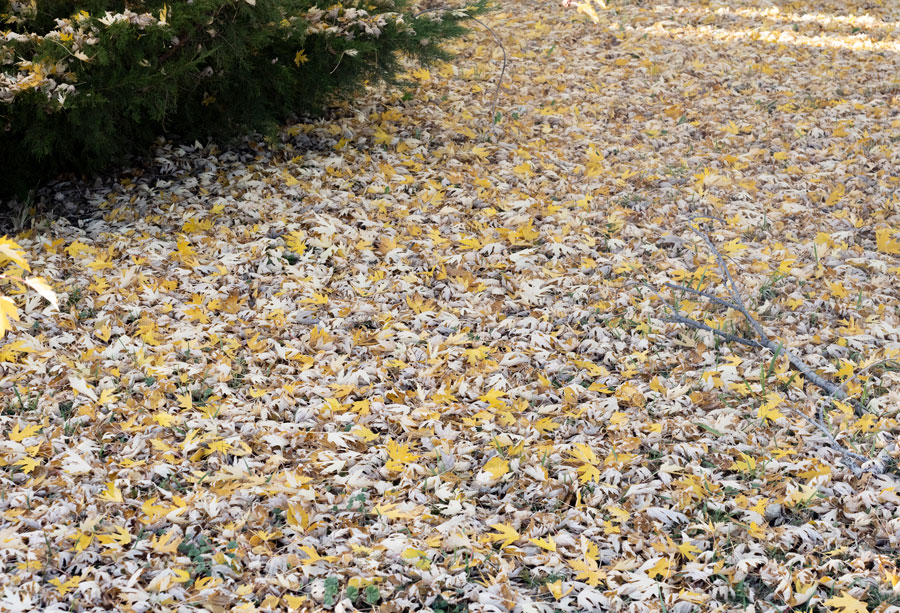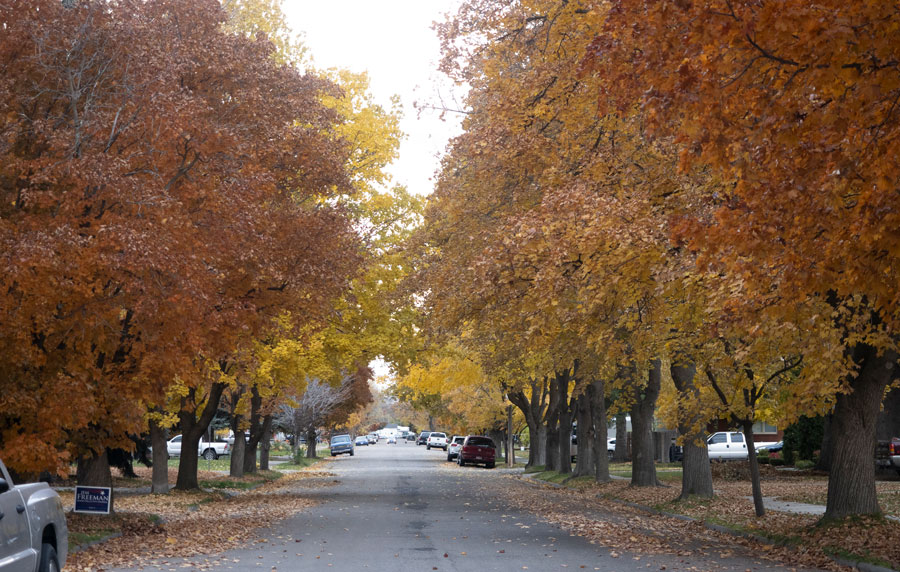What should you do with all those fallen leaves? Mulch? Compost? Trash?
Published at | Updated at
The fall color show has been brilliant this year. Bright oranges, yellows and reds, everywhere you go. Now those beautiful leaves are dropping to the ground. What can be done with all this organic material? Note: the following recommendations are for tree and shrub leaves. Vegetables and flowers may need to be treated differently.
One of our soil challenges in East Idaho is that we are low in organic matter. The carbon cycle in forests and other natural landscapes puts the carbon captured by plant roots, stems and leaves, back into the soil through growing plants and leaf litter. If we can get this organic matter back into the soil, our soils will be healthier and more productive.
What to avoid
- Don’t allow the leaves to form a mat on the lawn through the winter. This creates a nice area for winter molds to form on the lawn. Thick mats of leaves can kill the grass, creating spotty lawns.
- Don’t take your leaves to the landfill. Organic matter is easy and cheap to recycle. We don’t need to fill our waste facilities with leaves and branches.

What to do
- Mulch the leaves back into the lawn or onto the ground with a mulching mower. It is easier to do this when the leaves are dry and brittle. You could also use a mower with a side chute and mow the leaves to the edge of the lawn. These shredded leaves can be placed under trees and shrubs where worms and other soil organisms can break them down and move them into the soil.
- Bag and compost the leaves. Leaves are considered “brown” material in the compost world, so adding “green” material, such as lawn clippings will help them to break down faster.
If you are concerned about disease organisms, make sure the compost pile temperature reaches 140⁰F for a few days, turn the pile outside to inside and run the temperature up again. The pile should start out at least four feet high and wide if the leaves are shredded, larger if they have not been shredded. The critical components for composting plant bio-waste are oxygen, moisture (like a wrung-out sponge), and nitrogen. When you turn the pile, you introduce oxygen back into the mix, but you may need to add a little more moisture. A little bit of nitrogen fertilizer may help. Sometimes you may need to introduce heat to get it started. In the fall and early winter, a covering of clear plastic should be enough to warm things up.
- Bagged leaves can be spread over flower beds and vegetable gardens. If they haven’t been somewhat shredded, you run the risk of the wind blowing them away again, so it’s best to run the leaf piles through your mower a couple of time to reduce their ability to blow in the wind.
- Take your bagged leaves to a municipal or commercial composting location. Many county landfills have an area where you can dump leaves and branches and they will run them through their composting system.
Mother Nature works hard to produce this organic matter. Let’s help her out by getting that material back where it does the most good.

In the Garden is sponsored by ProPeat, which is dedicated to delivering solutions for any of your professional fertilization needs. Whether you need to reduce the harm to soils and the environment, or you're interested in the latest nitrogen, carbon and biochemical technologies, ProPeat is the perfect fit.


